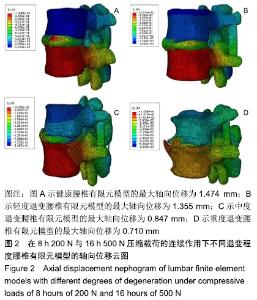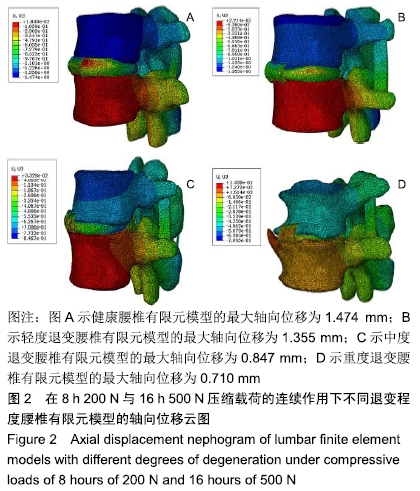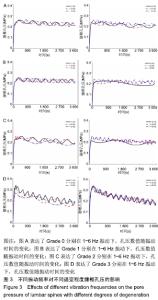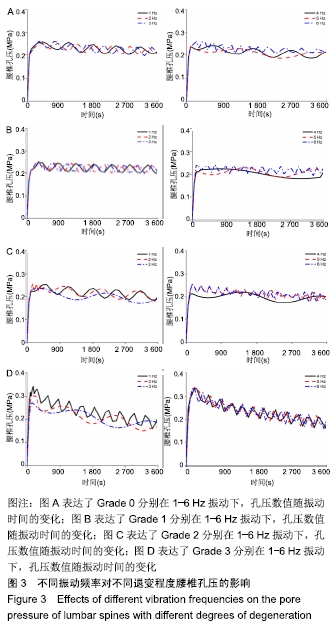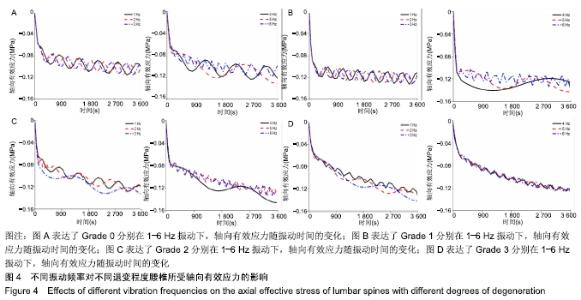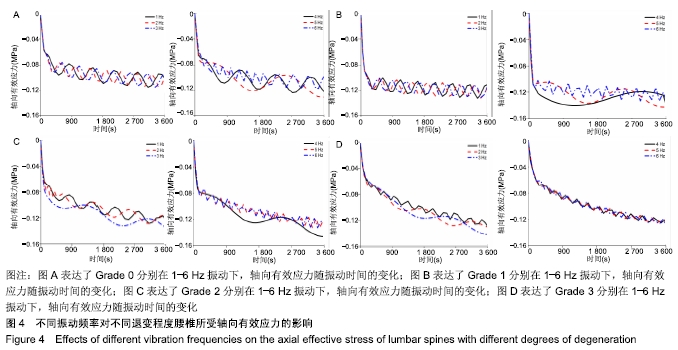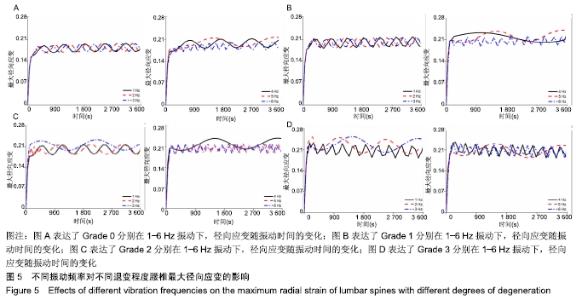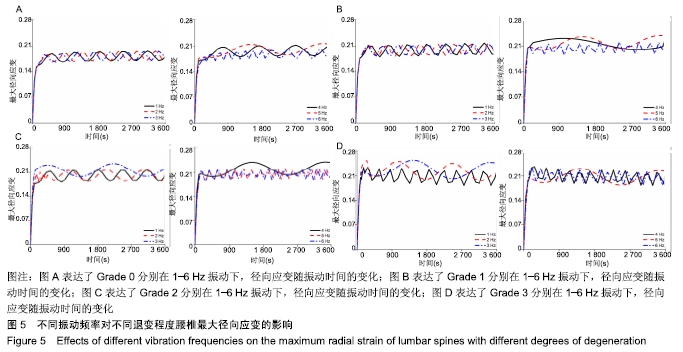[1] HILL TE, DESMOULIN GT, HUNTER CJ. Is vibration truly an injurious stimulus in the human spine? J Bio. 2009; 42(16): 2631-2635.
[2] DONG RC, HE L, DU W, et al. Effect of sitting posture and seat on biodynamic responses of internal human body simulated by finite element modeling of body-seat system. J Sound Vib. 2019; 438: 543-554.
[3] SOROSH A, SADEGH N, MOHAMAD P. Modeling and validation of a detailed FE viscoelastic lumbar spine model for vehicle occupant dummies. Comput Biol Med. 2018; 99: 191-200.
[4] FAN W, GUO LX. The role of posterior screw fixation in single-level transforaminal lumbar interbody fusion during whole body vibration: a finite element study. World Neurosurgery. 2018; 114: 1086-1093.
[5] STOKES IA, GARDNER-MORSE M. A database of lumbar spinal mechanical behavior for validation of spinal analytical models. J Biomech. 2016; 49(5): 780-785.
[6] FAN RX, GONG H, QIU S, et al. Effects of resting modes on human lumbar spines with different levels of degenerated intervertebral discs: a finite element investigation. BMC Musculoskel Dis. 2015; 16: 221.
[7] FAN W, GUO LX. Influence of different frequencies of axial cyclic loading on time-domain vibration response of the lumbar spine: a finite element study. Comput Biol Med. 2017; 86(1): 75-81.
[8] KEYKAOUS A, RAMEZAN M, MOHSEN P, et al. Evaluation of whole-body vibration exposure among urban metro drivers: comparing ISO2631-1 and ISO2631-5 standards to evaluate exposure. Health Scope. 2018; 7(2): e55928.
[9] IMAN S, ELIZABETH GS, QUENTEN H, et al. Mechanical demands on the lower back in patients with non-chronic low back pain during a symmetric lowering and lifting task. J Bio. 2018; 70(S1): 255-261.
[10] GOEL VK, PARK H, KONG WZ. Investigation of vibration characteristics of the ligamentous lumbar spine using the finite element approach. J Biomech Eng-T ASME. 1994; 116(4): 377-383.
[11] CHEUNG JTM, ZHANG M, CHOW DHK. Biomechanical responses of the intervertebral joints to static and vibrational loading: a finite element study. Clin Biomech. 2003; 18(9): 790-799.
[12] KIM JH, DENNERLEIN JT, JOHNSON PW. The effect of a multi-axis suspension on whole body vibration exposures and physical stress in the neck and low back in agricultural tractor applications. Appl Ergon. 2018; 68: 80-89.
[13] GRUEVSKI KM, HOLMES MWR, GOOYERS CE. Lumbar postures, seat interface pressures and discomfort responses to a novel thoracic support for police officers during prolonged simulated driving exposures. Appl Ergon. 2016; 52:160-168.
[14] KUMAR S. Vibration in operating heavy haul trucks in overburden mining. Appl Ergon. 2004; 35(6): 509-520.
[15] KELLER TS, COLLOCA CJ. Dynamic dorsoventral stiffness assessment of the ovine lumbar spine. J Bio. 2007; 40(1): 191-197.
[16] FAN RX, LIU J, LI YL, et al. Finite element investigation of the effects of the low-frequency vibration generated by vehicle driving on the human lumbar mechanical properties. Biomed Res Int. 2018; 7962414.
[17] WANG SC, WANG LZ, WANG YW, et al. Biomechanical analysis of combining head-down tilt traction with vibration for different grades of degeneration of the lumbar spine. Med Eng Phys. 2017; 39: 83-93.
[18] WILKE HJ, ROHLMANN F, WILKE CN, et al. Validity and interobserver agreement of a new radiographic grading system for intervertebral disc degeneration: part I. lumbar spine. Eur Spine J. 2006;15(6): 720-730.
[19] GALBUSERA F, SCHMIDT H, WILKE CN, et al. The effect of degenerative morphological changes of the intervertebral disc on the lumbar spine biomechanics: a poroelastic finite element investigation. Comp Methods Biomech Biomed Eng. 2011; 14(8): 729-739.
[20] IATRIDIS JC, SETTON LA, FOSTER RJ, et al. Degeneration affects the anisotropic and nonlinear behaviors of human anulus fibrosus in compression. J Biomech. 1998; 31(6): 535-544.
[21] XU H, TANG H, GUAN XM, et al. Biomechanical comparison of posterior lumbar interbody fusion and transforaminal lumbar interbody fusion by finite element analysis. Neurosurgery. 2013; 72 (1): 21-26.
[22] SCHMIDT H, BASHKUEV M, GALBUSERA F, et al. Finite element study of human lumbar disc nucleus replacements. Comp Methods Biomech Biomed Eng. 2014; 17(16): 1762-1776.
[23] GALBUSERA F, SCHMIDT H, NOAILLY J, et al. Comparison of four methods to simulate swelling in poroelastic finite element models of intervertebral discs. J Mech Behav Biomed. 2011; 4(7): 1234-1241.
[24] 范若寻,刘杰,刘军,等.动态仿真分析车辆低频振动对人体腰椎的损伤机制[J].中国组织工程研究,2018,22(35):5648-5654.
[25] SHARMA M, LANGRANA NA, RODRIGUEZ J. Role of ligaments and facets in lumbar spinal stability. Spine. 1995; 20(8): 887-900.
[26] NIKKHOO M, HAGHPANAHI M, WANG JL, et al. A poroelastic finite element model to describe the time-dependent response of lumbar intervertebral disc. J Med Imaging Health Inf. 2011; 1(3): 246-251.
[27] QIU Y, GRIFFIN MJ. Transmission of vibration to the backrest of a car seat evaluated with multi-input models. J Sound Vib. 2004; 274(1-2): 297-321.
[28] VERVER MM, HOOF VJ, OOMENS CWJ, et al. Estimation of spinal loading in vertical vibrations by numerical simulation. Clin Biomech. 2003; 18(9): 800-811.
[29] 李睿,郭立新.非持续载荷下腰间盘的多孔弹性特征[J].东北大学学报, 2013, 34(4): 573-577.
[30] GALBUSERA F, SCHMIDT H, NEIDLINGER-WILKE C, et al. The mechanical response of the lumbar spine to different combinations of disc degenerative changes investigated using randomized poroelastic finite element models. Eur Spine J. 2011; 20(4): 563-571.
[31] GUO LX, FAN W. Dynamic response of the lumbar spine to whole-body vibration under a compressive follower preload. Spine. 2018; 43(3): 143-153.
[32] NACHUM S, ALTUS E. Natural frequencies and mode shapes of deterministic and stochastic non-homogeneous rods and beams. J Sound Vib. 2007; 302(4-5): 903-924.
[33] PANKOKE S, HOFMANN J, WOLFEL HP. Determination of vibration-related spinal loads by numerical simulation. Clin Biomech. 2001; 16(1): 45-56.
[34] MAGNUSSON M, POPE M, ROSTEDT M, et al. Effect of backrest inclination on the transmission of vertical vibrations through the lumbar spine. Clin Biomech. 1993; 8(1): 5-12.
|
